FLIR i7 Operating Manual
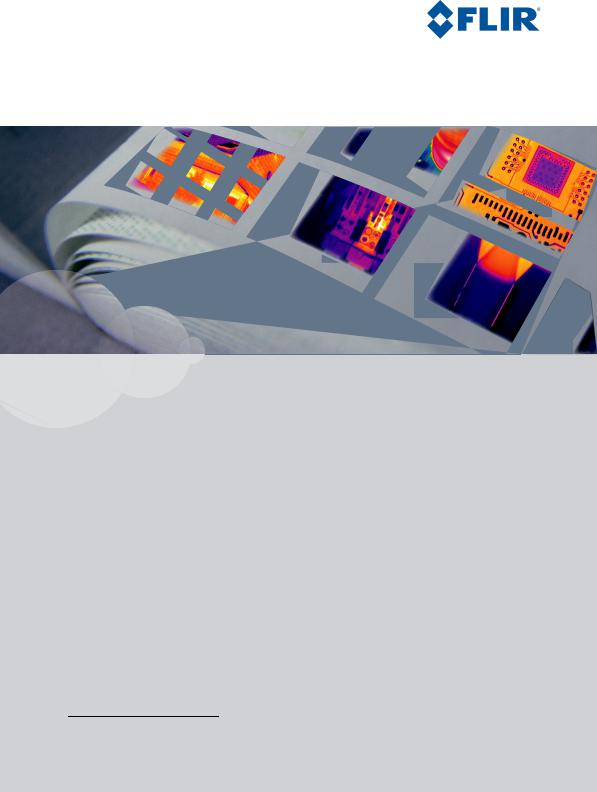
User’s manual
User’s manual – Benutzerhandbuch – Manual del usuario – Manuel de l’utilisateur – Manuale dell’utente – Manual do utilizador – Felhas-
nual – Benutzerhandbuch – Manual del usuario – Manuel de l’utilisateur – Manuale dell’utente – Manual do utilizador – Felhasználói kézikönyv – Käyttäjän opas – Betjenings- ználói kézikönyv – Käyttäjän opas – Betjeningsvejledning – Brukerveiledning – Instrukcja obsługi – Bruksanvisning– Kullanım
ning – Brukerveiledning – Instrukcja obsługi – Bruksanvisning– Kullanım Kılavuzu – Uživatelská příručka – Gebruikershandleiding
Kılavuzu – Uživatelská příručka – Gebruikershandleiding
FLIR i5
FLIR i7
 Publ. No.
Publ. No.  T559382
T559382
Revision a358
 Language
Language  English (EN)
English (EN)
Issue date June 23, 2009
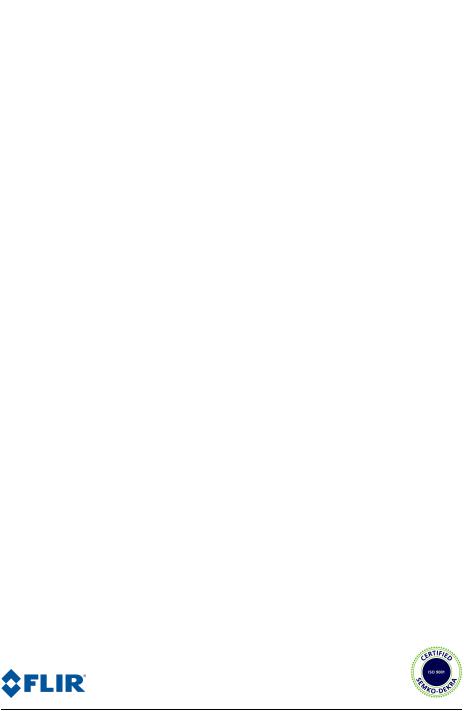
User’s manual
Publ. No. T559382 Rev. a358 – ENGLISH (EN) – June 23, 2009

Legal disclaimer
All products manufactured by FLIR Systems are warranted against defective materials and workmanship for a period of one (1) year from the delivery date of the original purchase, provided such products have been under normal storage, use and service, and in accordance with FLIR Systems instruction.
All products not manufactured by FLIR Systems included in systems delivered by FLIR Systems to the original purchaser carry the warranty, if any, of the particular supplier only and FLIR Systems has no responsibility whatsoever for such products.
The warranty extends only to the original purchaser and is not transferable. It is not applicable to any product which has been subjected to misuse, neglect, accident or abnormal conditions of operation. Expendable parts are excluded from the warranty.
In the case of a defect in a product covered by this warranty the product must not be further used in order to prevent additional damage. The purchaser shall promptly report any defect to FLIR Systems or this warranty will not apply.
FLIR Systems will, at its option, repair or replace any such defective product free of charge if, upon inspection, it proves to be defective in material or workmanship and provided that it is returned to FLIR Systems within the said one-year period.
FLIR Systems has no other obligation or liability for defects than those set forth above.
No other warranty is expressed or implied. FLIR Systems specifically disclaims the implied warranties of merchantability and fitness for a particular purpose.
FLIR Systems shall not be liable for any direct, indirect, special, incidental or consequential loss or damage, whether based on contract, tort or any other legal theory.
Copyright
©FLIRSystems,2009.Allrightsreservedworldwide.Nopartsofthesoftwareincludingsourcecodemaybereproduced,transmitted,transcribed or translated into any language or computer language in any form or by any means, electronic, magnetic, optical, manual or otherwise, without the prior written permission of FLIR Systems.
This manual must not, in whole or part, be copied, photocopied, reproduced, translated or transmitted to any electronic medium or machine readable form without prior consent, in writing, from FLIR Systems.
Names and marks appearing on the products herein are either registered trademarks or trademarks of FLIR Systems and/or its subsidiaries. Allothertrademarks,tradenamesorcompanynamesreferencedhereinareusedforidentificationonlyandarethepropertyoftheirrespective owners.
Quality assurance
The Quality Management System under which these products are developed and manufactured has been certified in accordance with the ISO 9001 standard.
FLIR Systems is committed to a policy of continuous development; therefore we reserve the right to make changes and improvements on any of the products described in this manual without prior notice.
Patents
One or several of the following patents or design patents apply to the products and/or features described in this manual:
0002258-2;000279476-0001;000439161;000499579-0001;000653423;000726344;000859020;0101577-5;0102150-0;0200629-4;0300911- 5;0302837-0;1144833;1182246;1182620;1188086;1263438;1285345;1287138;1299699;1325808;1336775;1678485;200530018812.0; 2106017; 235308; 3006596; 3006597; 466540; 483782; 484155; 518836; 60004227.8; 60122153.2; 602004011681.5-08; 6707044; 68657; 7034300; 7110035; 7154093; 7157705; 7237946; 7312822; 7332716; 7336823; 75530; D540838; D549758; DI6702302-9; DI6703574-4; DM/057692;DM/061609;ZL00809178.1;ZL01823221.3;ZL01823226.4;ZL02331553.9;ZL02331554.7;ZL200530120994.2;ZL200630130114.4; ZL200730151141.4.
EULA Terms
■You have acquired a device (“INFRARED CAMERA”) that includes software licensed by FLIR Systems AB from Microsoft Licensing, GP or its affiliates (“MS”). Those installed software products of MS origin, as well as associated media, printed materials, and “online” or electronicdocumentation(“SOFTWARE”)areprotectedbyinternationalintellectualpropertylawsandtreaties.TheSOFTWAREislicensed, not sold. All rights reserved.
■IF YOU DO NOT AGREE TO THIS END USER LICENSE AGREEMENT (“EULA”), DO NOT USE THE DEVICE OR COPY THE SOFTWARE. INSTEAD, PROMPTLY CONTACT FLIR Systems AB FOR INSTRUCTIONS ON RETURN OF THE UNUSED DEVICE(S) FOR A REFUND.
ANY USE OF THE SOFTWARE, INCLUDING BUT NOT LIMITED TO USE ON THE DEVICE, WILL CONSTITUTE YOUR AGREEMENT TO THIS EULA (OR RATIFICATION OF ANY PREVIOUS CONSENT).
■GRANT OF SOFTWARE LICENSE. This EULA grants you the following license:
■You may use the SOFTWARE only on the DEVICE.
■NOT FAULT TOLERANT. THE SOFTWARE IS NOT FAULT TOLERANT. FLIR Systems AB HAS INDEPENDENTLY DETERMINED HOWTOUSETHESOFTWAREINTHEDEVICE,ANDMSHASRELIEDUPONFLIRSystemsABTOCONDUCTSUFFICIENTTESTING TO DETERMINE THAT THE SOFTWARE IS SUITABLE FOR SUCH USE.
iv
Publ. No. T559382 Rev. a358 – ENGLISH (EN) – June 23, 2009

■NO WARRANTIES FOR THE SOFTWARE. THE SOFTWARE is provided “AS IS” and with all faults. THE ENTIRE RISK AS TO SATISFACTORY QUALITY, PERFORMANCE, ACCURACY, AND EFFORT (INCLUDING LACK OF NEGLIGENCE) IS WITH YOU. ALSO, THEREISNOWARRANTYAGAINSTINTERFERENCEWITHYOURENJOYMENTOFTHESOFTWAREORAGAINSTINFRINGEMENT.
IF YOU HAVE RECEIVED ANY WARRANTIES REGARDING THE DEVICE OR THE SOFTWARE, THOSE WARRANTIES DO NOT ORIGINATE FROM, AND ARE NOT BINDING ON, MS.
■No Liability for Certain Damages. EXCEPT AS PROHIBITED BY LAW, MS SHALL HAVE NO LIABILITY FOR ANY INDIRECT,
SPECIAL, CONSEQUENTIAL OR INCIDENTAL DAMAGES ARISING FROM OR IN CONNECTION WITH THE USE OR PERFORMANCE OF THE SOFTWARE. THIS LIMITATION SHALL APPLY EVEN IF ANY REMEDY FAILS OF ITS ESSENTIAL PURPOSE. IN NO EVENT SHALL MS BE LIABLE FOR ANY AMOUNT IN EXCESS OF U.S. TWO HUNDRED FIFTY DOLLARS (U.S.$250.00).
■Limitations on Reverse Engineering, Decompilation, and Disassembly. Youmaynotreverseengineer,decompile,ordisassemble theSOFTWARE,exceptandonlytotheextentthatsuchactivityisexpresslypermittedbyapplicablelawnotwithstandingthislimitation.
■SOFTWARE TRANSFER ALLOWED BUT WITH RESTRICTIONS. YoumaypermanentlytransferrightsunderthisEULAonlyaspart of a permanent sale or transfer of the Device, and only if the recipient agrees to this EULA. If the SOFTWARE is an upgrade, any transfer must also include all prior versions of the SOFTWARE.
■EXPORT RESTRICTIONS. You acknowledge that SOFTWARE is subject to U.S. export jurisdiction. You agree to comply with all applicableinternationalandnationallawsthatapplytotheSOFTWARE,includingtheU.S. ExportAdministrationRegulations,aswell as end-user, end-use and destination restrictions issued by U.S. and other governments. For additional information see http://www.microsoft.com/exporting/.
Publ. No. T559382 Rev. a358 – ENGLISH (EN) – June 23, 2009

vi
Publ. No. T559382 Rev. a358 – ENGLISH (EN) – June 23, 2009

Table of contents
1 |
Warnings & Cautions ..................................................................................................................... |
1 |
|
2 |
Notice to user .................................................................................................................................. |
3 |
|
3 |
Customer help ................................................................................................................................ |
4 |
|
4 |
Documentation updates ................................................................................................................. |
5 |
|
5 |
Important note about this manual ................................................................................................. |
6 |
|
6 |
Quick Start Guide ........................................................................................................................... |
7 |
|
7 |
Packing list ...................................................................................................................................... |
9 |
|
8 |
Camera parts .................................................................................................................................. |
10 |
|
9 |
Screen elements ............................................................................................................................ |
13 |
|
10 |
Connectors and storage media .................................................................................................... |
15 |
|
11 |
Using the camera ............................................................................................................................ |
16 |
|
|
11.1 |
Installing the battery ............................................................................................................. |
16 |
|
11.2 |
Charging the battery ............................................................................................................. |
17 |
|
11.3 |
Saving an image ................................................................................................................... |
19 |
|
11.4 |
Recalling an image ............................................................................................................... |
20 |
|
11.5 |
Opening the image archive .................................................................................................. |
21 |
|
11.6 |
Deleting an image ................................................................................................................. |
22 |
|
11.7 |
Deleting all images ............................................................................................................... |
23 |
|
11.8 |
Measuring a temperature using a spotmeter ....................................................................... |
24 |
|
11.9 |
Measuring a temperature using an area .............................................................................. |
25 |
|
11.10 |
Marking all areas above or below a set temperature level .................................................. |
26 |
|
11.11 |
Changing the color palette ................................................................................................... |
27 |
|
11.12 |
Changing the settings .......................................................................................................... |
28 |
|
11.13 |
Changing the image mode ................................................................................................... |
29 |
|
11.14 |
Setting the surface properties .............................................................................................. |
30 |
|
11.15 |
Changing the emissivity ....................................................................................................... |
31 |
|
11.16 |
Changing the reflected apparent temperature .................................................................... |
32 |
|
11.17 |
Resetting the camera ............................................................................................................ |
33 |
|
11.18 |
Finding the serial number of the camera ............................................................................. |
34 |
12 |
Cleaning the camera ...................................................................................................................... |
35 |
|
|
12.1 |
Camera housing, cables, and other items ........................................................................... |
35 |
|
12.2 |
Infrared lens .......................................................................................................................... |
36 |
13 |
Technical data ................................................................................................................................. |
37 |
|
|
13.1 |
Camera data ......................................................................................................................... |
37 |
|
13.2 |
Additional data ...................................................................................................................... |
40 |
|
13.3 |
Accessories data .................................................................................................................. |
42 |
14 |
Dimensions ...................................................................................................................................... |
43 |
|
|
14.1 |
Camera (front) ...................................................................................................................... |
43 |
|
14.2 |
Camera (side) ....................................................................................................................... |
44 |
Publ. No. T559382 Rev. a358 – ENGLISH (EN) – June 23, 2009 |
vii |

15 Application examples ..................................................................................................................... |
|
45 |
||
15.1 Moisture & water damage .................................................................................................... |
45 |
|||
15.2 Faulty contact in socket ........................................................................................................ |
46 |
|||
15.3 |
Oxidized socket .................................................................................................................... |
|
47 |
|
15.4 |
Insulation deficiencies .......................................................................................................... |
48 |
||
15.5 |
Draft ...................................................................................................................................... |
|
|
49 |
16 Introduction to building thermography ........................................................................................ |
50 |
|||
16.1 |
Important note ...................................................................................................................... |
|
50 |
|
16.2 |
Typical field investigations .................................................................................................... |
50 |
||
|
16.2.1 |
Guidelines ............................................................................................................. |
50 |
|
|
|
16.2.1.1 |
General guidelines ............................................................................ |
50 |
|
|
16.2.1.2 |
Guidelines for moisture detection, mold detection & detection of |
|
|
|
|
water damages .................................................................................. |
51 |
|
|
16.2.1.3 |
Guidelines for detection of air infiltration & insulation deficiencies ... |
51 |
|
16.2.2 |
About moisture detection ..................................................................................... |
52 |
|
|
16.2.3 Moisture detection (1): Low-slope commercial roofs .......................................... |
52 |
||
|
|
16.2.3.1 |
General information ........................................................................... |
52 |
|
|
16.2.3.2 |
Safety precautions ............................................................................ |
53 |
|
|
16.2.3.3 |
Commented building structures ....................................................... |
54 |
|
|
16.2.3.4 |
Commented infrared images ............................................................ |
55 |
|
16.2.4 Moisture detection (2): Commercial & residential façades .................................. |
57 |
||
|
|
16.2.4.1 |
General information ........................................................................... |
57 |
|
|
16.2.4.2 |
Commented building structures ....................................................... |
57 |
|
|
16.2.4.3 |
Commented infrared images ............................................................ |
59 |
|
16.2.5 Moisture detection (3): Decks & balconies .......................................................... |
59 |
||
|
|
16.2.5.1 |
General information ........................................................................... |
59 |
|
|
16.2.5.2 |
Commented building structures ....................................................... |
60 |
|
|
16.2.5.3 |
Commented infrared images ............................................................ |
62 |
|
16.2.6 Moisture detection (4): Plumbing breaks & leaks ................................................ |
62 |
||
|
|
16.2.6.1 |
General information ........................................................................... |
62 |
|
|
16.2.6.2 |
Commented infrared images ............................................................ |
63 |
|
16.2.7 |
Air infiltration ......................................................................................................... |
65 |
|
|
|
16.2.7.1 |
General information ........................................................................... |
65 |
|
|
16.2.7.2 |
Commented building structures ....................................................... |
65 |
|
|
16.2.7.3 |
Commented infrared images ............................................................ |
67 |
|
16.2.8 |
Insulation |
deficiencies .......................................................................................... |
68 |
|
|
16.2.8.1 |
General information ........................................................................... |
68 |
|
|
16.2.8.2 |
Commented building structures ....................................................... |
68 |
|
|
16.2.8.3 |
Commented infrared images ............................................................ |
70 |
16.3 Theory of building science ................................................................................................... |
72 |
|||
|
16.3.1 |
General information .............................................................................................. |
72 |
|
|
16.3.2 The effects of testing and checking ..................................................................... |
73 |
||
|
16.3.3 Sources of disruption in thermography ................................................................ |
74 |
||
|
16.3.4 Surface temperature and air leaks ....................................................................... |
76 |
||
|
|
16.3.4.1 |
Pressure conditions in a building ..................................................... |
76 |
|
16.3.5 Measuring conditions & measuring season ......................................................... |
82 |
||
|
16.3.6 Interpretation of infrared images .......................................................................... |
82 |
||
|
16.3.7 Humidity & dew point ........................................................................................... |
84 |
||
|
|
16.3.7.1 |
Relative & absolute humidity ............................................................ |
84 |
|
|
16.3.7.2 |
Definition of dew point ...................................................................... |
85 |
16.3.8Excerpt from Technical Note ‘Assessing thermal bridging and insulation
continuity’ (UK example) ...................................................................................... |
85 |
viii
Publ. No. T559382 Rev. a358 – ENGLISH (EN) – June 23, 2009

|
|
16.3.8.1 |
Credits ............................................................................................... |
85 |
|
|
16.3.8.2 |
Introduction ....................................................................................... |
86 |
|
|
16.3.8.3 |
Background information ................................................................... |
86 |
|
|
16.3.8.4 |
Quantitative appraisal of thermal anomalies .................................... |
87 |
|
|
16.3.8.5 |
Conditions and equipment ............................................................... |
90 |
|
|
16.3.8.6 |
Survey and analysis .......................................................................... |
91 |
|
|
16.3.8.7 |
Reporting ........................................................................................... |
92 |
16.4 |
Disclaimer ............................................................................................................................. |
|
94 |
|
|
16.4.1 |
Copyright |
notice ................................................................................................... |
94 |
|
16.4.2 |
Training & certification .......................................................................................... |
94 |
|
|
16.4.3 National or regional building codes ..................................................................... |
94 |
||
17 Introduction to thermographic inspections of electrical installations ...................................... |
95 |
|||
17.1 |
Important note ...................................................................................................................... |
|
95 |
|
17.2 |
General information .............................................................................................................. |
|
95 |
|
|
17.2.1 |
Introduction ........................................................................................................... |
95 |
|
|
17.2.2 |
General equipment data ....................................................................................... |
96 |
|
|
17.2.3 |
Inspection |
............................................................................................................. |
97 |
|
17.2.4 |
Classification & reporting ...................................................................................... |
97 |
|
|
17.2.5 |
Priority ................................................................................................................... |
|
98 |
|
17.2.6 |
Repair .................................................................................................................... |
|
98 |
|
17.2.7 |
Control .................................................................................................................. |
|
99 |
17.3 |
Measurement technique for thermographic inspection of electrical installations ............... |
100 |
||
|
17.3.1 How to correctly set the equipment ..................................................................... |
100 |
||
|
17.3.2 |
Temperature measurement ................................................................................... |
100 |
|
|
17.3.3 |
Comparative measurement .................................................................................. |
102 |
|
|
17.3.4 |
Normal operating temperature ............................................................................. |
103 |
|
|
17.3.5 |
Classification of faults ........................................................................................... |
104 |
|
17.4 |
Reporting .............................................................................................................................. |
|
106 |
|
17.5 |
Different types of hot spots in electrical installations ........................................................... |
108 |
||
|
17.5.1 |
Reflections ............................................................................................................ |
108 |
|
|
17.5.2 |
Solar heating ......................................................................................................... |
108 |
|
|
17.5.3 |
Inductive heating ................................................................................................... |
109 |
|
|
17.5.4 |
Load variations ...................................................................................................... |
109 |
|
|
17.5.5 |
Varying cooling conditions ................................................................................... |
110 |
|
|
17.5.6 |
Resistance variations ............................................................................................ |
111 |
|
|
17.5.7 Overheating in one part as a result of a fault in another ...................................... |
111 |
||
17.6 |
Disturbance factors at thermographic inspection of electrical installations ........................ |
113 |
||
|
17.6.1 |
Wind ...................................................................................................................... |
|
113 |
|
17.6.2 |
Rain and snow ...................................................................................................... |
113 |
|
|
17.6.3 |
Distance to object ................................................................................................. |
114 |
|
|
17.6.4 |
Object size ............................................................................................................ |
115 |
|
17.7 |
Practical advice for the thermographer ................................................................................ |
117 |
||
|
17.7.1 From cold to hot ................................................................................................... |
117 |
||
|
17.7.2 |
Rain showers ........................................................................................................ |
117 |
|
|
17.7.3 |
Emissivity .............................................................................................................. |
|
117 |
|
17.7.4 |
Reflected apparent temperature ........................................................................... |
118 |
|
|
17.7.5 Object too far away ............................................................................................... |
118 |
||
18 About FLIR Systems ....................................................................................................................... |
|
119 |
||
18.1 |
More than just an infrared camera ....................................................................................... |
120 |
||
18.2 |
Sharing our knowledge ........................................................................................................ |
120 |
||
18.3 |
Supporting our customers ................................................................................................... |
120 |
||
18.4 |
A few images from our facilities ........................................................................................... |
121 |
||
Publ. No. T559382 Rev. a358 – ENGLISH (EN) – June 23, 2009 |
ix |

19 |
Glossary ........................................................................................................................................... |
|
|
123 |
|
20 |
Thermographic measurement techniques ................................................................................... |
127 |
|||
|
20.1 |
Introduction .......................................................................................................................... |
|
127 |
|
|
20.2 |
Emissivity .............................................................................................................................. |
|
127 |
|
|
|
20.2.1 Finding the emissivity of a sample ....................................................................... |
128 |
||
|
|
|
20.2.1.1 |
Step 1: Determining reflected apparent temperature ....................... |
128 |
|
|
|
20.2.1.2 |
Step 2: Determining the emissivity ................................................... |
130 |
|
20.3 |
Reflected apparent temperature .......................................................................................... |
131 |
||
|
20.4 |
Distance ................................................................................................................................ |
|
|
131 |
|
20.5 |
Relative humidity .................................................................................................................. |
|
131 |
|
|
20.6 |
Other parameters .................................................................................................................. |
|
131 |
|
21 |
History of infrared technology ...................................................................................................... |
132 |
|||
22 |
Theory of thermography ................................................................................................................ |
|
136 |
||
|
22.1 |
Introduction ........................................................................................................................... |
|
136 |
|
|
22.2 |
The electromagnetic spectrum ............................................................................................ |
136 |
||
|
22.3 |
Blackbody radiation .............................................................................................................. |
|
137 |
|
|
|
22.3.1 |
Planck’s law .......................................................................................................... |
138 |
|
|
|
22.3.2 |
Wien’s displacement law ...................................................................................... |
139 |
|
|
|
22.3.3 |
Stefan-Boltzmann's law ......................................................................................... |
141 |
|
|
|
22.3.4 |
Non-blackbody emitters ....................................................................................... |
142 |
|
|
22.4 |
Infrared semi-transparent materials ..................................................................................... |
144 |
||
23 |
The measurement formula ............................................................................................................. |
|
146 |
||
24 |
Emissivity tables ............................................................................................................................. |
|
152 |
||
|
24.1 |
References ............................................................................................................................ |
|
152 |
|
|
24.2 |
Important note about the emissivity tables .......................................................................... |
152 |
||
|
24.3 |
Tables .................................................................................................................................... |
|
|
153 |
x
Publ. No. T559382 Rev. a358 – ENGLISH (EN) – June 23, 2009

1Warnings & Cautions
WARNING
CAUTION
■This equipment generates, uses, and can radiate radio frequency energy and if not installed and used in accordance with the instruction manual, may cause interference to radio communications. It has been tested and found to comply with the limits for a Class A computing device pursuant to Subpart J of Part 15 of FCC Rules,whicharedesignedtoprovidereasonableprotectionagainstsuchinterference when operated in a commercial environment. Operation of this equipment in a residential area is likely to cause interference in which case the user at his own expense will be required to take whatever measures may be required to correct the interference.
■(Applies only to cameras with laser pointer:) Do not look directly into the laser beam. The laser beam can cause eye irritation.
■Applies only to cameras with battery:
■Do not disassemble or do a modification to the battery. The battery contains safety and protection devices which, if they become damaged, can cause the battery to become hot, or cause an explosion or an ignition.
■If there is a leak from the battery and the fluid gets into your eyes, do not rub youreyes.Flushwellwithwaterandimmediatelygetmedicalcare.Thebattery fluid can cause injury to your eyes if you do not do this.
■Do not continue to charge the battery if it does not become charged in the specified charging time. If you continue to charge the battery, it can become hot and cause an explosion or ignition.
■Only use the correct equipment to discharge the battery. If you do not use the correct equipment, you can decrease the performance or the life cycle of the battery. If you do not use the correct equipment, an incorrect flow of current to the battery can occur. This can cause the battery to become hot, or cause an explosion and injury to persons.
■Make sure that you read all applicable MSDS (Material Safety Data Sheets) and warninglabelsoncontainersbeforeyouusealiquid:theliquidscanbedangerous.
■Donotpointtheinfraredcamera(withorwithoutthelenscover)atintensiveenergy sources, for example devices that emit laser radiation, or the sun. This can have an unwanted effect on the accuracy of the camera. It can also cause damage to the detector in the camera.
■Do not use the camera in a temperature higher than +50°C (+122°F), unless specified otherwise in the technical data section. High temperatures can cause damage to the camera.
■(Applies only to cameras with laser pointer:) Protect the laser pointer with the protective cap when you do not operate the laser pointer.
■Applies only to cameras with battery:
■Do not attach the batteries directly to a car’s cigarette lighter socket, unless a specific adapter for connecting the batteries to a cigarette lighter socket is provided by FLIR Systems.
■Do not connect the positive terminal and the negative terminal of the battery to each other with a metal object (such as wire).
■Do not get water or salt water on the battery, or permit the battery to get wet.
Publ. No. T559382 Rev. a358 – ENGLISH (EN) – June 23, 2009 |
1 |

1 – Warnings & Cautions
■Do not make holes in the battery with objects. Do not hit the battery with a hammer. Do not step on the battery, or apply strong impacts or shocks to it.
■Donotputthebatteriesinornearafire,orintodirectsunlight.Whenthebattery becomes hot, the built-in safety equipment becomes energized and can stop the battery charging process. If the battery becomes hot, damage can occur to the safety equipment and this can cause more heat, damage or ignition of the battery.
■Do not put the battery on a fire or increase the temperature of the battery with heat.
■Do not put the battery on or near fires, stoves, or other high-temperature locations.
■Do not solder directly onto the battery.
■Do not use the battery if, when you use, charge, or store the battery, there is anunusualsmellfromthebattery,thebatteryfeelshot,changescolor,changes shape, or is in an unusual condition. Contact your sales office if one or more of these problems occurs.
■Only use a specified battery charger when you charge the battery.
■The temperature range through which you can charge the battery is ±0°C to +45°C(+32°Fto+113°F). Ifyouchargethebatteryattemperaturesoutofthis range,itcancausethebatterytobecomehotortobreak. Itcanalsodecrease the performance or the life cycle of the battery.
■Thetemperaturerangethroughwhichyoucandischargethebatteryis −15°C to +50°C (+5°F to +122°F). Use of the battery out of this temperature range can decrease the performance or the life cycle of the battery.
■When the battery is worn, apply insulation to the terminals with adhesive tape or similar materials before you discard it.
■Do not apply solvents or similar liquids to the camera, the cables, or other items. This can cause damage.
■Becarefulwhenyoucleantheinfraredlens. Thelenshasadelicateanti-reflective coating.
■Do not clean the infrared lens too vigorously. This can damage the anti-reflective coating.
2 |
Publ. No. T559382 Rev. a358 – ENGLISH (EN) – June 23, 2009 |
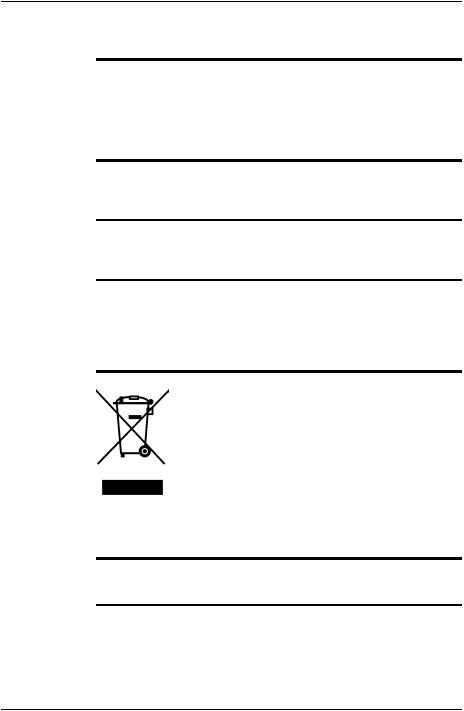
2
Typographical conventions
User-to-user forums
Calibration
Accuracy
Disposal of electronic waste
Training
Notice to user
This manual uses the following typographical conventions:
■Semibold is used for menu names, menu commands and labels, and buttons in dialog boxes.
■Italic is used for important information.
■Monospace is used for code samples.
■UPPER CASE is used for names on keys and buttons.
Exchangeideas,problems,andinfraredsolutionswithfellowthermographersaround the world in our user-to-user forums. To go to the forums, visit:
http://www.infraredtraining.com/community/boards/
(This notice only applies to cameras with measurement capabilities.)
We recommend that you send in the camera for calibration once a year. Contact your local sales office for instructions on where to send the camera.
(This notice only applies to cameras with measurement capabilities.)
For very accurate results, we recommend that you wait 5 minutes after you have started the camera before measuring a temperature.
For cameras where the detector is cooled by a mechanical cooler, this time period excludes the time it takes to cool down the detector (usually 5–7 minutes).
10742803;a1
Aswithmostelectronicproducts,thisequipmentmustbedisposedofinanenvironmentallyfriendlyway,andinaccordancewithexistingregulationsforelectronicwaste.
Please contact your FLIR Systems representative for more details.
To read about infrared training, visit:
http://www.infraredtraining.com
Publ. No. T559382 Rev. a358 – ENGLISH (EN) – June 23, 2009 |
3 |

3Customer help
General
Submitting a question
Downloads
For customer help, visit:
http://flir.custhelp.com
To submit a question to the customer help team, you must be a registered user. It onlytakesafewminutestoregisteronline. Ifyouonlywanttosearchtheknowledgebase for existing questions and answers, you do not need to be a registered user.
Whenyouwanttosubmitaquestion,makesurethatyouhavethefollowinginformation to hand:
■The camera model
■The camera serial number
■The communication protocol, or method, between the camera and your PC (for example, HDMI, Ethernet, USB™, or FireWire™)
■Operating system on your PC
■Microsoft® Office version
■Full name, publication number, and revision number of the manual
On the customer help site you can also download the following:
■Firmware updates for your infrared camera
■Program updates for your PC software
■User documentation
■Application stories
■Technical publications
4 |
Publ. No. T559382 Rev. a358 – ENGLISH (EN) – June 23, 2009 |

4Documentation updates
General |
Our manuals are updated several times per year, and we also issue product-critical |
|
notifications of changes on a regular basis. |
|
To access the latest manuals and notifications, go to the Download tab at: |
|
http://flir.custhelp.com |
|
It only takes a few minutes to register online. In the download area you will also find |
|
the latest releases of manuals for our other products, as well as manuals for our |
|
historical and obsolete products. |
Publ. No. T559382 Rev. a358 – ENGLISH (EN) – June 23, 2009 |
5 |

5Importantnoteaboutthismanual
General |
FLIR Systems issues generic manuals that cover several cameras within a model |
|
line. |
|
This means that this manual may contain descriptions and explanations that do not |
|
apply to your particular camera model. |
NOTE |
FLIRSystemsreservestherighttodiscontinuemodels,software,partsoraccessories, |
|
and other items, or to change specifications and/or functionality at any time without |
|
prior notice. |
6 |
Publ. No. T559382 Rev. a358 – ENGLISH (EN) – June 23, 2009 |
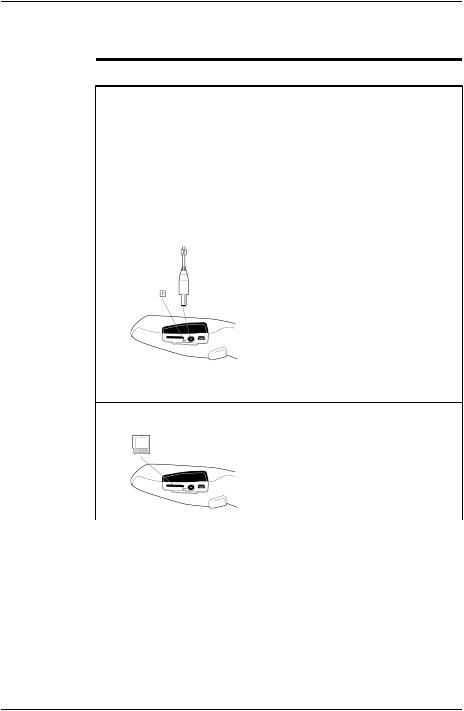
6Quick Start Guide
Procedure |
Follow this procedure to get started right away: |
|
|
1 |
Remove the protective film from the LCD. |
2You must charge the battery inside the camera for four full hours (or until the battery charging indicator displays a green light) before you use the camera for the first time.
Chargethebatterybyconnectingthepowersupplytothepowerconnector on the camera. Make sure that you use the correct AC plug.
Note: The first time you charge a factory-new battery you must turn on and then turn off the camera after you have connected the power supply to the power connector on the camera.
T630175;a1
1 Battery charging indicator
2 Power supply cable
3Insert a miniSD™ memory card into the card slot.
T630176;a1
Publ. No. T559382 Rev. a358 – ENGLISH (EN) – June 23, 2009 |
7 |

6 – Quick Start Guide
4Push the On/Off button to turn on the camera.
Note: Ifthecameradoesnotstartafteryouhavechargedthebattery,push the reset button with a non-conductive tool. The reset button is located beside the battery connector, inside the battery compartment. Then press the On/Off button again.
The reset button:
T630179;a1
5Open the lens cap by pushing the lens cap lever.
T630177;a1
 6
6  Aim the camera toward your target of interest.
Aim the camera toward your target of interest.
7 Pull the Save trigger to save the image.
8To move the image to a computer, do one of the following:
T630178;a1
■(Fig. 1 above) Remove the miniSD™ memory card and insert it into a cardreaderconnectedtoacomputer.AminiSD™cardadapterisincluded with your camera.
■(Fig. 2 above) Connect a computer to the camera using a USB™ Mini- B cable.
9In Windows® Explorer, move the image from the card or camera using a drag-and-drop operation.
8 |
Publ. No. T559382 Rev. a358 – ENGLISH (EN) – June 23, 2009 |

7Packing list
Contents
NOTE
■Battery (inside camera)
■Calibration certificate
■FLIR QuickReport CD
■Hand strap
■Infrared camera
■miniSD card (512 MB), with SD adapter
■Power supply/charger with EU, UK, US and Australian plugs
■Printed Getting Started Guide
■USB cable
■User documentation CD-ROM
■Contact your local sales office if any item is damaged or missing. You can find the addresses and telephone numbers of local sales offices on the back cover of this manual.
■FLIRSystemsreservestherighttodiscontinuemodels,partsoraccessories,and other items, or to change specifications at any time without prior notice.
Publ. No. T559382 Rev. a358 – ENGLISH (EN) – June 23, 2009 |
9 |
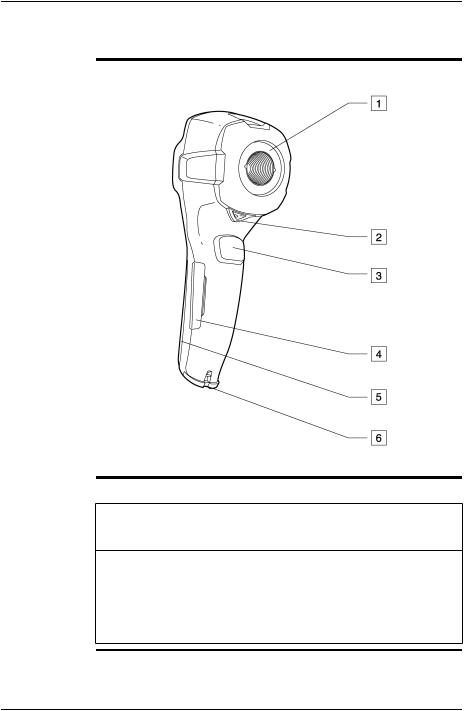
8Camera parts
Figure |
10780903;a1 |
Explanation |
This table explains the figure above: |
|
|
1 |
Infrared lens |
|
2 |
Lever to open and close the lens cap |
|
3 |
Trigger to save images |
|
4 |
Cover to connectors and the miniSD™ memory card slot |
|
5 |
Cover to the battery compartment |
|
6 |
Attachment point for the hand strap |
10 |
Publ. No. T559382 Rev. a358 – ENGLISH (EN) – June 23, 2009 |
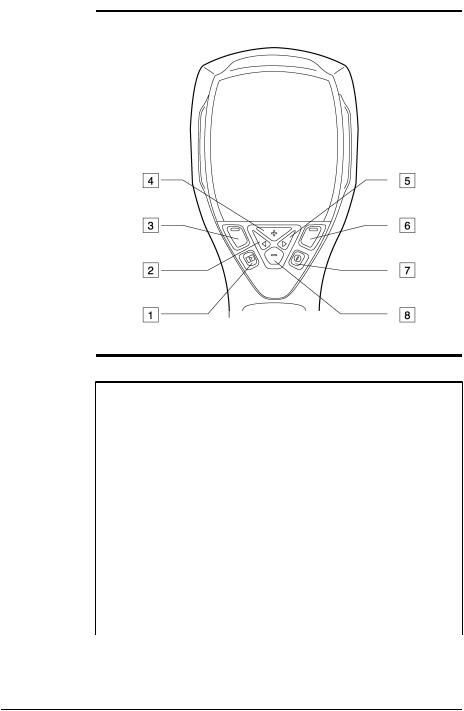
8 – Camera parts
Figure |
10781003;a1 |
Explanation |
This table explains the figure above: |
1Archive button
Function: Push to open the image archive.
2Left arrow button (on the navigation pad) Function:
■Push to go left in menus, submenus, and dialog boxes
■Push to navigate in the image archive
3Left selection button. This button is context-sensitive, and the current function is displayed above the button on the screen.
4+ button (on the navigation pad) Function:
■Push to go up in menus, submenus, and dialog boxes.
■Push to display the image archive (after having pushed the Archive button).
■Push to increase/change the value.
Publ. No. T559382 Rev. a358 – ENGLISH (EN) – June 23, 2009 |
11 |
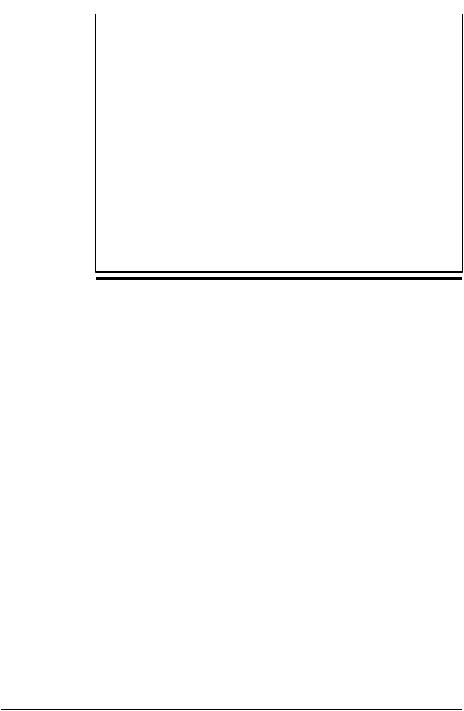
8 – Camera parts
5Right arrow button (on the navigation pad) Function:
■Push to go right in menus, submenus, and dialog boxes.
■Push to navigate in the image archive.
6Right selection button. This button is context-sensitive, and the current function is displayed above the button on the screen.
7On/Off button Function:
■Push to turn on the camera.
■Push and hold down for more than one second to turn off the camera.
8– button (on navigation pad) Function:
■Push to go down in menus, submenus, and dialog boxes.
■Push to decrease/change the value.
12 |
Publ. No. T559382 Rev. a358 – ENGLISH (EN) – June 23, 2009 |
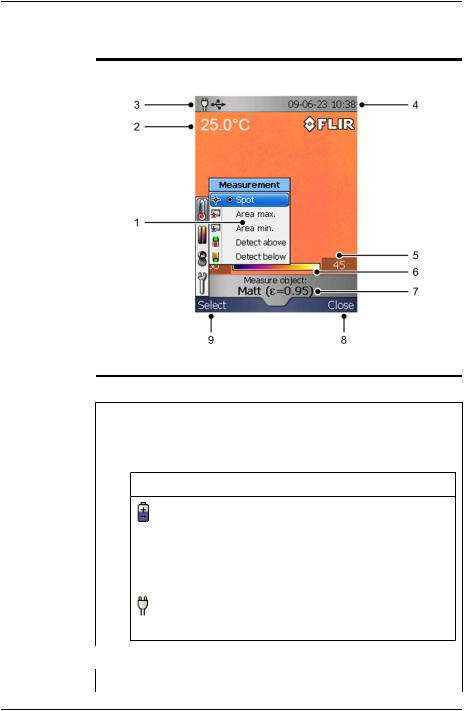
9Screen elements
Figure
Explanation
10781203;a2
This table explains the figure above:
1  Menu system
Menu system
2 Measurement result
3Power indicator
Icon |
Meaning |
One of the following:
■ The camera is powered using the battery.
■ The battery is being charged (indicated by a refilling battery animation).
Thebatteryisfullychargedandthe camera is powered using the power supply.
 4
4  Date and time
Date and time
5 Limit value for the temperature scale
Publ. No. T559382 Rev. a358 – ENGLISH (EN) – June 23, 2009 |
13 |

9 – Screen elements
 6
6  Temperature scale
Temperature scale
7 Currently set emissivity value or material properties
 8
8  Current function for the right selection button
Current function for the right selection button
9 Current function for the left selection button
14 |
Publ. No. T559382 Rev. a358 – ENGLISH (EN) – June 23, 2009 |

10 Connectors and storage media
Figure |
10780803;a1 |
Explanation |
This table explains the figure above: |
1miniSD™ memory card
We recommend that you do not save more than 5,000 images on the miniSD™ memory card.
Although a memory card may have a higher capacity than 5,000 images, savingmorethanthatnumberofimagesseverelyslowsdownfilemanagement on the miniSD™ memory card.
Note: There is no upper limit to the memory size of the miniSD™ memory card.
2Battery charging indicator:
■No light: The power supply is not connected.
■Orange light: The battery is being charged.
■Green light: The charging of the battery is completed.
 3
3  Power supply cable
Power supply cable
4 USB cable with USB Mini-B connector
Publ. No. T559382 Rev. a358 – ENGLISH (EN) – June 23, 2009 |
15 |
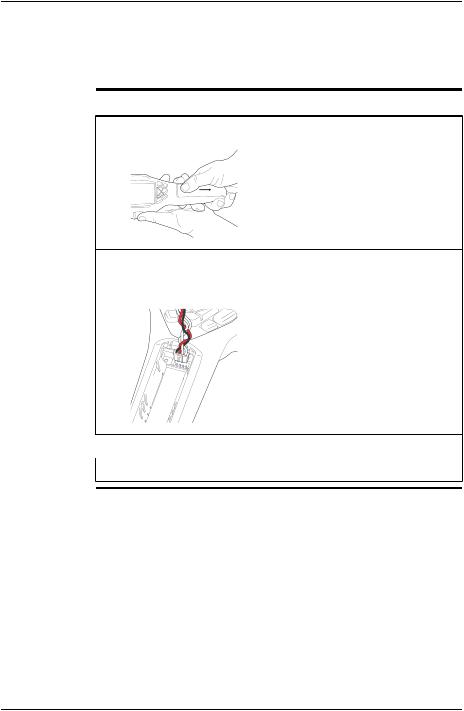
11 Using the camera
11.1Installing the battery
Procedure |
Follow this procedure to install the battery: |
1Remove the battery compartment cover.
T630174;a1
2Connect the cable that is attached to the battery to the connector inside the battery compartment. Note: Do not use conductive tools when doing this.
T630173;a2
 3
3  Push the battery into place.
Push the battery into place.
4 Replace the cover to close the battery compartment.
16 |
Publ. No. T559382 Rev. a358 – ENGLISH (EN) – June 23, 2009 |
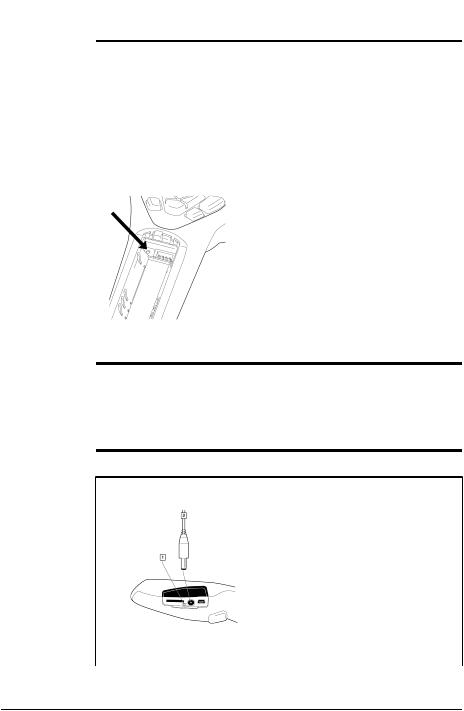
|
11 – Using the camera |
11.2 |
Charging the battery |
NOTE |
■ You must charge the battery inside the camera for four full hours (or until the |
|
battery indicator displays a green light) before you use the camera for the first |
|
time. |
|
■ The first time you charge a factory-new battery you must turn on and then turn off |
|
the camera after you have connected the power supply to the power connector |
|
on the camera. |
|
■ If the camera does not start after you have charged the battery, push the reset |
|
button with a non-conductive tool. The reset button is located beside the battery |
|
connector, inside the battery compartment. Then press the On/Off button again. |
|
The reset button: |
|
T630179;a1 |
About the battery charging indicator
Procedure
■Do not replace the battery on a frequent basis. Only replace the battery when it is worn out.
The battery charging indicator is an LED beside the power connector. It displays the following signals:
■No light: The power supply is not connected.
■Orange light: The battery is being charged.
■Green light: The charging of the battery is completed.
Follow this procedure to charge the battery:
1Connect the power supply to the power connector on the camera.
T630175;a1
1 Battery charging indicator
2 Power supply cable
Publ. No. T559382 Rev. a358 – ENGLISH (EN) – June 23, 2009 |
17 |

11 – Using the camera
2Connect the power supply mains-electricity plug to a mains socket. Make sure that you use the correct AC plug.
3Disconnectthepowersupplycableplugwhenthebatterychargingindicator displays a green light.
18 |
Publ. No. T559382 Rev. a358 – ENGLISH (EN) – June 23, 2009 |
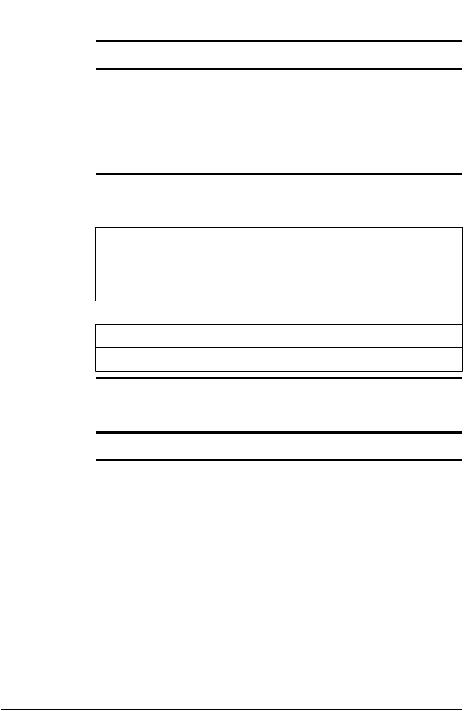
11 – Using the camera
11.3Saving an image
General
Image capacity
Formatting memory cards
Naming convention
You can save multiple images to the miniSD™ memory card.
We recommend that you do not save more than 5,000 images on the miniSD™ memory card.
Althoughamemorycardmayhaveahighercapacitythan5,000images,savingmore than that number of images severely slows down file management on the memory card.
Note: There is no upper limit to the memory size of the miniSD™ memory card.
For best performance, memory cards should be formatted to the FAT (FAT16) file system. Using FAT32-formatted memory cards may result in inferior performance. To format a memory card to FAT (FAT16), follow this procedure:
1Insert the memory card into a card reader that is connected to your computer.
2In Windows® Explorer, select My Computer and right-click the memory card.
 3
3  Select Format.
Select Format.
4 Under File system, select FAT.
5  Click Start.
Click Start.
The naming convention for images is IR_xxxx.jpg, where xxxx is a unique counter. WhenyouselectRestore,thecameraresetsthecounterandassignsthenexthighest free file name for the new file.
Procedure |
To save an image, pull the Save trigger. |
Publ. No. T559382 Rev. a358 – ENGLISH (EN) – June 23, 2009 |
19 |

11 – Using the camera
11.4Recalling an image
General
Procedure
When you save an image, it is stored on the removable miniSD™ memory card. To display the image again, you can recall it from the miniSD™ memory card.
Follow this procedure to recall an image:
1  Push the Archive button.
Push the Archive button.
2Do one of the following:
■Push the navigation pad left/right to select the image you want to view.
■Pushthe+button,usethenavigationpadtoselecttheimageyouwant to see, then push the right selection button (Open).
3To return to live mode, do one of the following:
■Push the Archive button.
■Push the right selection button (Close).
20 |
Publ. No. T559382 Rev. a358 – ENGLISH (EN) – June 23, 2009 |
